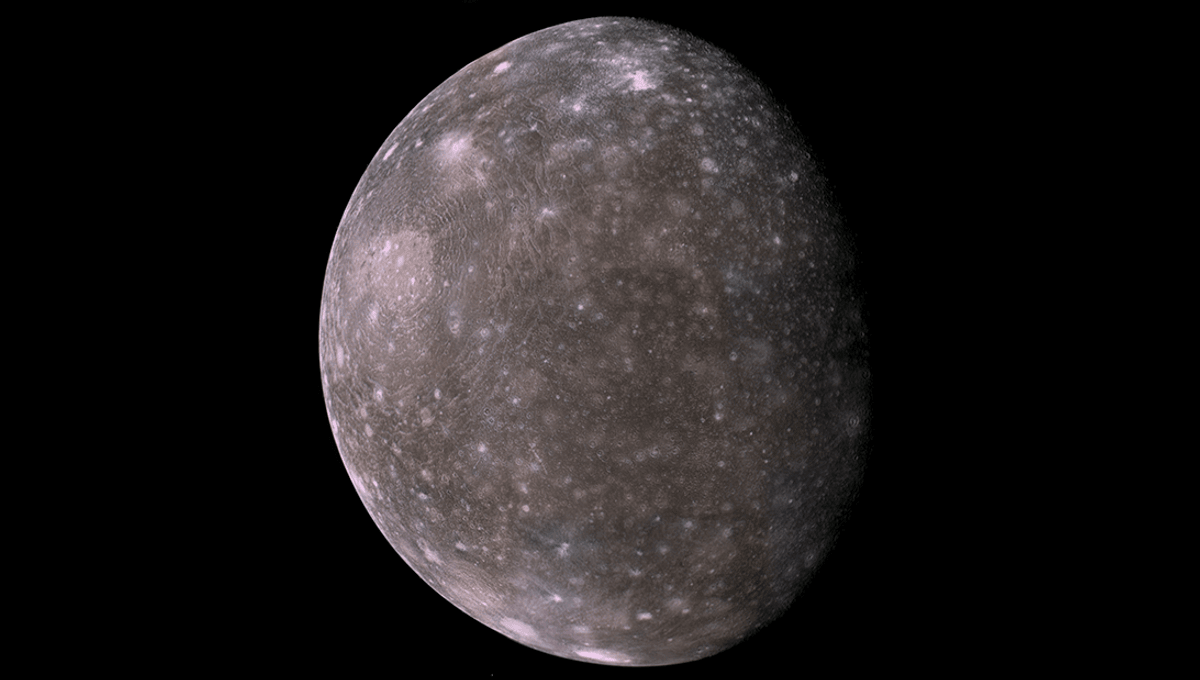
At last count, Jupiter had 92 moons, so it can be tough to get the spotlight. Especially when you are competing with the likes of Europa, showing off with hints of underground oceans, and possibly letting off massive plumes of water.
Callisto, despite being the second-largest of Jupiter’s ridiculous number of moons and the third-largest moon in the Solar System, doesn’t get a whole lot of attention. The icy moon has the oldest surface in the Solar System, and may have an ocean deep below the thick crust, but has failed to gain the scientific interest and resulting NASA missions of the other large moons.
However, it can still throw some surprises our way. The latest is that it has a lot more oxygen than we were expecting. We were expecting to find a little oxygen, after NASA probe Pioneer 10 found intense plasma in Jupiter’s magnetosphere. Experiments were conducted to determine the effect this plasma had on icy moons Europa, Ganymede, and Callisto.
“These experiments measured the ejection of water molecules from low-temperature ices by incident charged particles, a process referred to as sputtering,” a team of researchers write in a new study. “The results showed that the sputtering of H2O-ice is dominated by electronic excitations and ionizations produced in the ice (electronic sputtering), rather than by knock-on collisions of the ions with water molecules (nuclear sputtering), the hitherto typically studied sputtering process.”
“Subsequent experiments led to the discovery that the bonds in H2O-ice molecules can be dissociated by the electronic energy deposited by the impinging charged particles, and the fragmented molecules can recombine to form new species, such as H2 and O2.”
These models made us expect to find oxygen, but we didn’t know how much. Attempting to quantify how much atmospheric oxygen this would produce on Callisto, the team found that it fell far short of the amount of oxygen we believe is there from our observations.
“There’s a huge discrepancy,” lead author Shane Carberry Mogan told CNET. “We were off by something like two orders of magnitude to even three orders of magnitude.”
Even if the moon was 100 percent covered in ice, rather than the 10 percent assumed by the team, it still wouldn’t account for all the oxygen produced. The team suggested a number of other mechanisms by which this extra oxygen is making its way into the atmosphere, including a series of chemical reactions in water vapor and oxygen ion implantation from Jupiter’s magnetosphere, but neither would produce nearly enough oxygen to explain observations either.
The team suggests observations, perhaps during the upcoming JUICE mission to fly by the icy moons of Jupiter, should attempt to obtain “multi-point, concurrent measurements of the moon’s charged and neutral particle environments” in order to help solve the mystery.
The study is published in JGR Planets.
Source Link: Jupiter's Moon Callisto Has A Lot More Oxygen Than We Can Explain